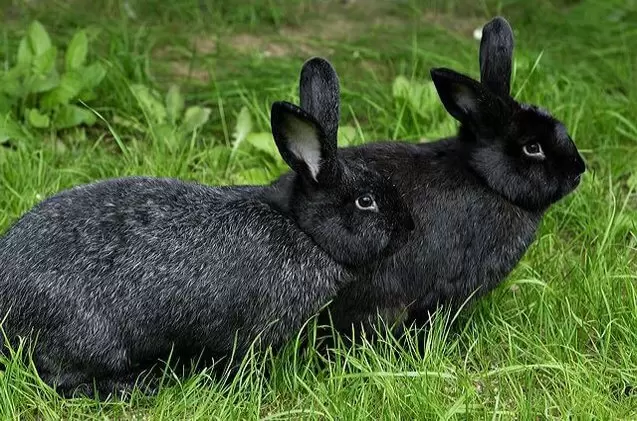- COUNTRY OF ORIGIN: England
- YEAR RECOGNIZED: 1914
- USES: Pet, show, meat
- WEIGHT: 7 pounds (3.2 kg) max., senior bucks and does
- BODY TYPE: Compact
- FUR TYPE: Flyback; ARBA Commercial Normal Fur Standard; short, smooth, close to body
- COLORS: Black with silver guard hairs; chestnut brown with black and silver guard hairs; fawn with silver guard hairs
THE SILVER IS ONE OF THE OLDEST RABBIT BREEDS and one of the rarest in North America. This medium-sized rabbit, with an ideal weight of 6 pounds (2.7 kg), was recognized by the National Pet Stock Association, a forerunner of the ARBA, in 1914, but its ancestry dates much earlier than that.
Domestic silver-gray rabbits appear in written English accounts as far back as 1631 and may have entered England as early as 1592. How they reached England is in doubt, though perhaps they were brought by Portuguese sailors. They may have reached Portugal from Siam (modern-day Thailand), but that’s in doubt, too. However the silvercolored rabbits arrived, nineteenth-century Britons were pioneers of selective breeding and by the 1870s they had turned their attention to the Silver Greys, fixing the breed and making it fit to exhibit.
The modern Silver is distinguished by a silvery tone on a darker fur field of black, brown, or fawn. The silver effect is produced by silver-white guard hairs evenly distributed throughout the upper coat. Silvers have what is sometimes called the standard rabbit body: of medium length with a slight taper from the hindquarters to the shoulders. In conformation, they’re similar to Silver Fox Rabbits, but Silvers are considerably smaller and have short, flat coats in comparison to the long, dense fur of the Silver Fox.

